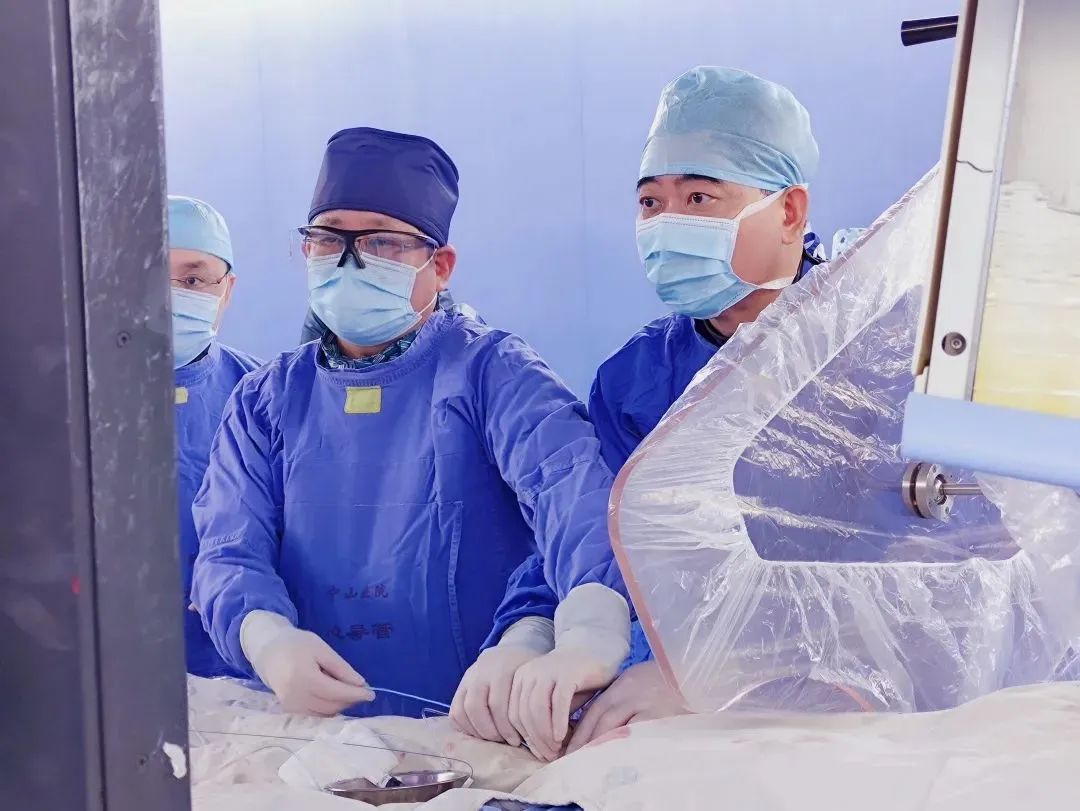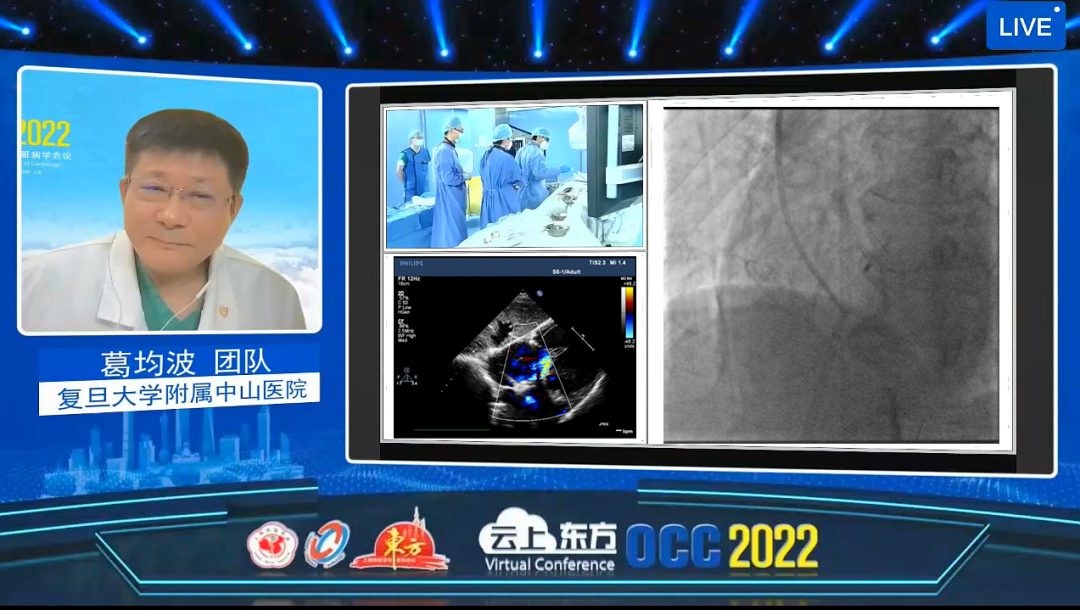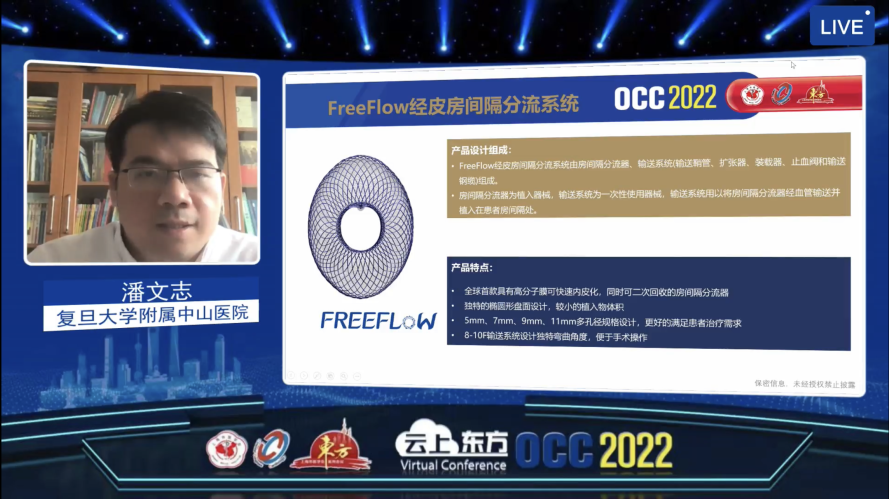The cardiac team led by Academician Ge Junbo, Prof. Zhou Daxin, Prof. Pan Wenzhi, and Dr. Li Mingfei at Zhongshan Hospital affiliated to Fudan University, in collaboration with various multidisciplinary departments such as Cardiology and Anesthesia, recently conducted the inaugural atrial shunt implantation employing the FreeFlow percutaneous atrial septal shunt system developed by Shanghai ConFlow MedTech Co., Ltd. This procedure was performed on an elderly patient suffering from pulmonary arterial hypertension and right heart failure and was showcased during the 2022 OCC Eastern Conference.

Preoperative diagnosis
An 81-year-old male patient was admitted to the hospital with a medical history of recurrent chest tightness and shortness of breath lasting over 4 years, worsen in the past 2 weeks. He was diagnosed with pulmonary arterial hypertension, paroxysmal atrial fibrillation, and heart failure.
Preoperative ultrasound evaluation
- Severe pulmonary arterial hypertension accompanied by severe tricuspid regurgitation, LVEF at 60%, left and right atrial diameter reduction, PASP at 75mmHg;
- Secondary right atrioventricular enlargement, thickening of the right ventricular wall, and compromised systolic function.
- Mild mitral regurgitation noted.
Clinical Evaluation
The patient's drug treatment failed to improve his condition, resulting in low urine output and persistent lower limb swelling. Following a thorough evaluation by a multidisciplinary team, a procedure known as atrial shunting was performed. This involved redirecting blood from the right atrium to the left atrium to ease the strain on the right side of the heart and alleviate symptoms of right heart failure.

Surgical Procedure

First Step:
Following the puncture, the femoral vein ascends to reach the right atrium and carries out an atrial septum puncture..
Second Step:
The atrial septum puncture hole was dilated using a balloon dilatation, followed by a atrial septostomy.
Third Step:
The FreeFlow delivery system accesses the left atrium via the atrial septostomy.
Fourth Step:
Gradually open the left and right FreeFlow shunt discs in the atrium
Fifth Step:
Monitor septal shunt blood flow using ultrasound.
Sixth Step:
Detach the shunt, remove it from the delivery system, and apply pressure to bandage the puncture site.

Postoperative DSA
A 5 mm atrial-septal shunt was successfully implanted, allowing visible atrial transseptal blood flow.

Preoperative echocardiography showed no blood flow across the atrial septum.

Post-surgery echocardiography revealed shunt pathways within the atrium.
Postoperative Ultrasound Evaluation
1、After atrial septal shunt implantation;
2、PASP is 61 mmHg with severe tricuspid regurgitation, leading to secondary enlargement of the right atrioventricular area and thickening of the right ventricular wall, resulting in reduced systolic function.
3、Mild mitral regurgitation;
Features of the FreeFlow percutaneous atrial septal shunt system include:
- The world's first atrial septal shunt featuring a polymer membrane for accelerated endothelialization and secondary recycling.
- Distinguished by its innovative elliptical disc design, offering a more compact implant size
- We offer multi-apertures with specifications of 5mm, 7mm, 9mm, and 11mm to cater to patients' treatment requirements more effectively.
- The 8-10F delivery system has a distinct bending angle designed to assist in surgical procedures.

The FreeFlow percutaneous atrial septal shunt system was implanted successfully in an elderly patient suffering from pulmonary arterial hypertension and right heart failure. Following the procedure, there was an improvement in cardiac output, increased urine output compared prior to the surgery, and a notable improvement in right heart failure symptoms. We anticipate the prompt initiation of a nationwide multi-center registered clinical trial for the FreeFlow percutaneous atrial septal shunt system, which holds huge potential promise for a broader group of patients dealing with heart failure and pulmonary arterial hypertension.
-
July 01,2023ConFlow MedTech's registration for the 2023 CSI Frankfurt International Summit debut.
-
October 11,20222022 China Structural Heart Disease Academic Week|Clinical progress of FreeFlow shunt in the treatment of right heart failure
-
May 09,2023Academician Ge Junbo's team has completed the first clinical enrollment of TriFlower new type foramen ovale obturator in China!
Pursue further excellence!





